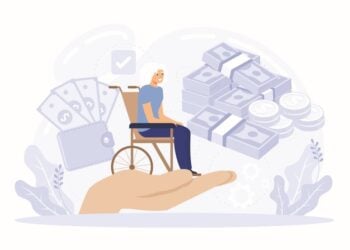More than 400 of the companies in the Standard & Poor’s 500 Index make regular cash distributions to shareholders. Unlike a bond’s interest payment, a dividend may not be a contractual obligation. Once a dividend has been established, however, companies have historically been reluctant to decrease or remove dividend payment without good cause.
Dividends give investors the ability to use corporate earnings in a variety of ways:
- They reinvest the dividend to buy more shares and build wealth.
- They take the dividend in cash withdrawals for income.
- They meet other financial obligations or a variety of financial objectives.
Let’s say you find a $25 stock that pays an annual dividend of $1 per share. That equates to a 4 percent yield, which is certainly respectable. This does not account for any increase in the share price over time or account for increased dividend payouts over time.
To illustrate the power of dividends, let’s take a look at Chevron (CVX). If we purchased CVX back in 1996 for 100 shares, the share price was $32.50 per share. The annual dividend at that time was $1.08 per share with a corresponding yield of 3.3 percent. Not all that exciting given it would have taken just over 30 years for dividends to return the investor’s original purchase price.
But the dividend did not stay flat! By the end of 2014, the annual dividend had quadrupled to $4.21 per share. Had the investor reinvested the dividend payments, the total value would be far greater and that is the best methodology of building wealth with stock dividend investing.
But Chevron enjoyed rising profits and dividend payments. By the end of 2014, Chevron’s stock price was $113.20 or more than three times the original purchase price. In addition, Chevron enjoyed dividend growth for 29 years since 1986. No one would consider Chevron to be a growth stock, but I have demonstrated that dividend payments can make a major impact!
Let’s review a more recent example. If we purchased shares of Proctor and Gamble (PG) in May 2010, the price per share was $61.09 with a corresponding yield of 3.16 percent.
The share price as of May 1, 2015 (five years later) was $81.69 with a yield of 3.13 percent. Although the yield has been similar, the stock enjoyed a large increase in share price. If we reinvested the dividends, we would have realized an even larger gain. In fact, according to Dividend.com, PG has experienced 58 years of dividend growth since 1957.
One man, Ronald Read, a Vermont gas station attendant and janitor, invested in recognizable brands and was able to amass an $8 million fortune, according to his attorney. A large part of that fortune was later bequeathed to an area library and hospital after his death, stunning a community that had no idea about his wealth.
Most of Read’s investments were found in a safety deposit box, Read’s attorney, Laurie Rowell, told CNBC. Those investments included AT&T, Bank of America, CVS, Deere, GE and General Motors. She told an interviewer from “Closing Bell” that he only invested in what he knew and what paid dividends.
Please note that dividend payments can be increased, decreased or eliminated at any point given prior notification of management
This article is intended for informational/educational purposes only and should not be construed as specific investment advice or a recommendation to buy or sell any security or investment product. The statements and opinions expressed in this article are those of the author. Talk to your financial advisor before making any investing decisions. Craig Richman









